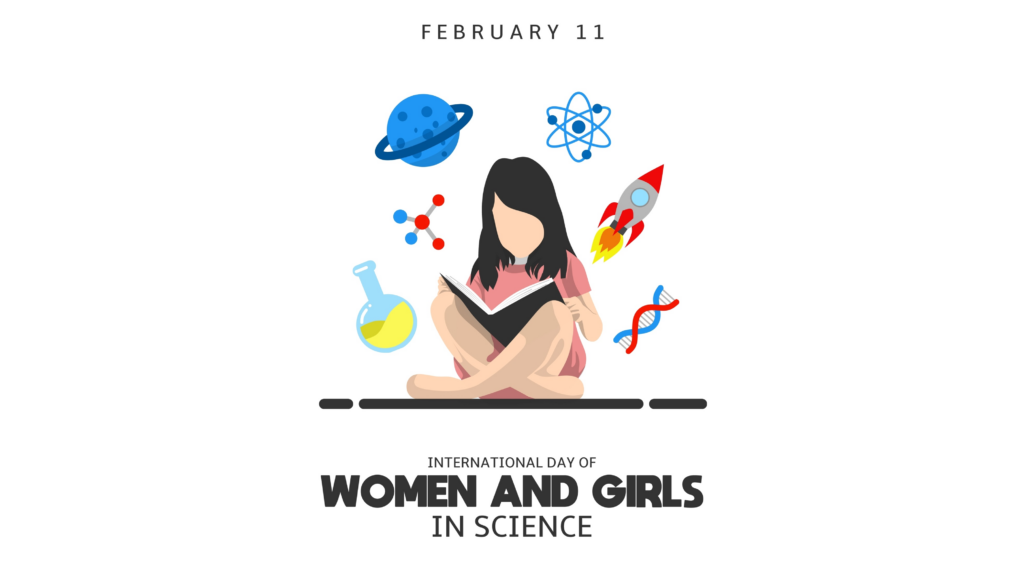As we commemorate the International Day of Women and Girls in Science 2024, it’s a moment to reflect on and celebrate the vital contributions of women and girls in the spheres of science and technology. This day, observed globally on February 11, underscores the critical role of gender equality in science, spotlighting the achievements of women pioneers in the field while also emphasizing the need to encourage and support the next generation of female scientists.
In industries that shape our daily lives, from life sciences and healthcare to medical devices, this day serves as a powerful reminder of the transformative impact of women and girls in science and the ongoing journey towards a more inclusive and equitable scientific community.
The Imperative for Diversity in Science
Diversity in the scientific community is not merely a goal but a necessity for fostering innovation. Studies, such as the one conducted by the Boston Consulting Group (BCG), reveal that companies with above-average diversity scores report a 19 percent higher innovation revenue than those with less diversity. This finding underscores the value of diverse perspectives in driving scientific and technological advancements.
In the context of life sciences and healthcare, the participation of women can lead to more inclusive research outcomes and healthcare solutions that cater to the needs of a broader population. However, the global research community still shows a significant gender imbalance, with the United Nations Educational, Scientific and Cultural Organization (UNESCO) reporting that less than 30 percent of researchers worldwide are women.
According to the United Nations (UN), research grants awarded to women are often less substantial than those allocated to their male counterparts, and even though women make up around a third of the global research community, they hold only a 12 percent membership in national science academies.
Facing the Gender Gap
The underrepresentation of women in science is a persistent issue. According to the UNESCO Institute for Statistics (UIS), only around 30 percent of female students choose STEM-related fields in higher education.
The gender gap becomes even more pronounced in the professional realm, particularly in leadership positions within the healthcare and technology sectors. For instance, approximately 70 percent of the global healthcare workforce consists of women, but according to estimates from the World Health Organization (WHO) and HolonIQ, only around 25 percent of leadership positions within the healthcare sector are held by females.
Trailblazers in the Field
Despite these challenges, numerous women have made groundbreaking contributions to their fields. The awarding of the Nobel Prize in Chemistry in 2020 to Jennifer Doudna and Emmanuelle Charpentier for their development of CRISPR-Cas9 gene-editing technology is a prime example of the extraordinary achievements of women in science. Similarly, Dr. Patricia Bath’s invention of the Laserphaco Probe, which revolutionized cataract surgery, exemplifies the profound impact women can have on medical technology and patient care.
Take also, for example, Tu Youyou, a pharmaceutical chemist who was awarded the Nobel Prize in Physiology or Medicine in 2015 for her discovery of artemisinin, a treatment that has significantly reduced mortality rates for patients suffering from malaria. Her work represents a monumental contribution to global health, saving millions of lives and continuing to impact malaria treatment worldwide.
In the realm of physics, Donna Strickland’s contributions cannot be overlooked. Awarded the Nobel Prize in Physics in 2018, Strickland co-invented chirped pulse amplification, a technique that underpins the development of high-intensity laser pulses. Her innovation has wide-ranging applications, from corrective eye surgeries to the machining of delicate materials, showcasing the profound impact of women’s innovations in science and technology.
Moreover, the field of mathematics has seen trailblazers like Maryam Mirzakhani, the first woman to be honored with the Fields Medal, often referred to as the Nobel Prize of Mathematics, in 2014. Her groundbreaking work on the dynamics and geometry of Riemann surfaces and their moduli spaces has opened new pathways in the understanding of complex mathematical concepts.
Education and Mentorship as Catalysts
Addressing the gender gap in science begins with education and mentorship. Initiatives aimed at young women, such as the Girls Who Code program, play a crucial role in inspiring future generations to pursue careers in science and technology.
Mentorship programs, like those offered by the Association for Women in Science (AWIS), provide essential support and guidance for women navigating careers in scientific fields. These programs not only help to increase the representation of women in science but also ensure they have the resources and networks needed to succeed.
The Business Advantage
The correlation between gender diversity and enhanced business performance is supported by a wealth of research and data, underscoring the tangible benefits of fostering an inclusive work environment. A landmark study by McKinsey & Company, for example, found that companies in the top quartile for gender diversity on their executive teams were 25 percent more likely to achieve above-average profitability than companies in the lowest quartile. This suggests that gender diversity is not just a metric of social responsibility but a strategic advantage.
Further supporting this, a study by Catalyst found that companies with the highest percentages of women board directors outperformed those with the least by 42 percent on return on sales, 53 percent on return on equity and 66 percent on return on invested capital. These statistics highlight the direct impact of female leadership on a company’s financial health and operational efficiency.
In addition, a report by Credit Suisse Research Institute observed that companies with at least one woman on the board outperform those without any women on the board in terms of share price performance. This further emphasizes the value that women bring to leadership roles, not only in enhancing company culture and decision-making processes but also in driving financial success.
Moreover, gender-diverse teams are more likely to be innovative and responsive to the needs of a diverse customer base. According to a study in Harvard Business Review, organizations with gender diversity are 70 percent more likely to capture a new market and 45 percent more likely to report market share growth.
A Unified Call to Action
Achieving gender equality in science requires concerted efforts from governments, educational institutions, industry leaders and communities. It’s imperative to implement policies and practices that encourage the inclusion and advancement of women in scientific fields. International Day of Women and Girls in Science 2024 serves as a reminder of the collective responsibility to support and empower women and girls in science, ensuring they have equal opportunities to contribute to and benefit from scientific advancements.
Celebrating the contributions of women and girls in science is about recognizing their achievements and addressing the barriers they face. By promoting gender equality in science, we can unlock the full potential of human creativity and innovation, leading to advancements that benefit all of humanity. As we honor the achievements of women in science, let’s also commit to creating an environment where every aspiring woman scientist has the opportunity to achieve her full potential.












Join or login to leave a comment
JOIN LOGIN